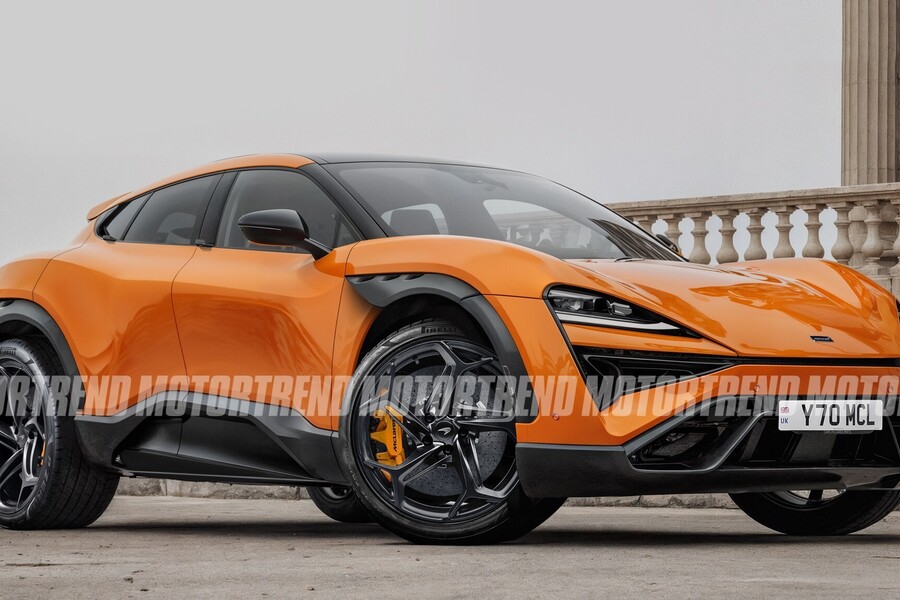McLaren is preparing the first multi-passenger vehicle in its history—a plug-in hybrid “shared performance vehicle” (SPV) positioned directly against Ferrari’s Purosangue—signaling a decisive shift for a brand that has long sworn off anything resembling an SUV. The SPV label is intentional: McLaren wants to deliver a supercar-level experience that can be shared with more than two occupants while avoiding the utility-first baggage that comes with the term “SUV.” It’s a pragmatic move driven by financial necessity and changing buyer tastes, and if executed well, it could become the volume pillar that sustains McLaren’s next generation of supercars.
The product brief is clear. Power will come from an existing McLaren engine, with the next-gen twin-turbo V-8 most likely at the core, augmented by a plug-in hybrid system. Executives have floated the idea that the brand’s twin-turbo V-6 hybrid—engineered for mid-engine applications—may be too wide to package up front, reinforcing the case for a V-8 PHEV. Target characteristics emphasize low mass, precise responses, and a driving feel that’s unmistakably McLaren despite the higher seating position and added practicality. In short, it must behave like a supercar first and a family-capable machine second.
The bigger strategic question is what sits beneath it. McLaren has signaled it would prefer to collaborate on a platform rather than develop an entirely new architecture alone—an approach that reduces cost and time to market. That calculus is complicated, and potentially advantaged, by corporate ties: McLaren and British advanced-mobility startup Forseven are now under the same parent, CYVN Holdings. Before the merger, Forseven had been exploring an electric SUV and secured a licensing arrangement to access Nio’s EV technologies. That ecosystem could supply battery, motor, and software components while McLaren contributes the combustion-hybrid powertrain and chassis tuning. Taking more of the program in-house would better serve weight and design goals, but it would also raise costs and delay launch. The likeliest outcome is a McLaren-led hybrid powertrain integrated into a platform that benefits from that shared tech stack.
Positioning is as bold as the product. McLaren is aiming above straightforward performance SUVs like the Aston Martin DBX and Lamborghini Urus and directly at Ferrari’s Purosangue, a car that reframed what a four-door, high-riding model can be for a purebred sports-car brand. That choice sets expectations for price, exclusivity, and on-road character. It also clarifies the mission: this isn’t about maximum cargo or towing; it’s about delivering a McLaren-caliber drive with space for more than one passenger to experience it.
Context matters here. After years of uneven sales, cash crunches, and ownership changes, McLaren needs a higher-volume model to stabilize revenue. Porsche proved two decades ago that a high-rider can bankroll a brand’s racing and supercar ambitions; Ferrari has shown it can be done without diluting identity. For McLaren, the SPV is the logical next step: a product that can attract new customers—especially those who need more seats—without abandoning the brand’s light-weighting ethos, steering purity, and powertrain sophistication. If it resonates, the SPV becomes not just another model but a financial backstop for limited-run exotics and future electrification.
Design will be the tightrope. McLaren’s language—long, flowing surfaces; teardrop cabins; functional aero—doesn’t naturally transplant onto a tall silhouette. The challenge is to keep proportions athletic, roofline low enough to read as “McLaren,” and overhangs tight, while accommodating a front-mounted engine, hybrid hardware, and a usable second row. Material choices (extensive carbon and aluminum), careful battery sizing, and brake-energy integration will be critical to hitting weight and response targets. So will steering calibration: buyers will expect the immediacy and precision that define the brand, not just big power and a tall stance.
What should shoppers and fans expect next? Watch for decisions on the platform partner, confirmation of the V-8 PHEV powertrain, and early prototypes that reveal packaging and proportions. Given the brand’s priorities, don’t be surprised if McLaren starts by emphasizing curb weight and lap-time credibility rather than maximum horsepower headlines. The business case likely demands meaningful production volumes, but rarity and pricing will need to track the Purosangue rather than the mass-market end of the segment to protect brand equity.
Why it matters is straightforward: this vehicle could determine McLaren’s financial trajectory for the next decade. Done right, it brings new customers into the fold, funds cutting-edge supercars, and sets up a pathway to a fully electric high-rider later on. Done poorly, it risks brand confusion and the perception of chasing trends. The ingredients for success—clear positioning, a credible hybrid V-8, access to modern EV components via corporate ties, and relentless focus on weight—are in place. Now the execution has to match the ambition.
Bottom line: McLaren is finally ready to do the “unthinkable” because the market and its balance sheet demand it. A plug-in hybrid, Purosangue-rivaling SPV that feels like a McLaren from the driver’s seat could be the car that keeps Woking’s pure supercars alive—by letting more people in on the experience.

